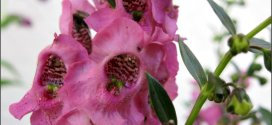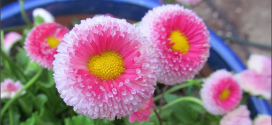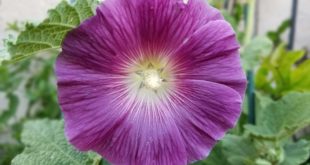Big super-duper double pom-poms of peachy-apricot, 4-5” across, are densely stacked all around the stalk for maximum impact. So beautiful! Imagine these next to a garden gate or low fence or standing tall mid to back of bed. Cottage garden nirvana! To 6-8’ and branching. Biennial, they’ll bloom the first season if planted in Spring in temperate climates like ours. …
Read More »Tag Archives: Biennial
Foxglove – Dark Rose Angel Mist
Foxglove, Digitalis purpurea. This plant is attractive to bees, butterflies and/or birds. Average Water Needs; Water regularly; do not overwater. Self-sows freely; deadhead if you do not want volunteer seedlings next season. Other details: May be a noxious weed or invasive. The bad news is that foxglove (Digitalis purpurea) does not occur as a perennial. It is a biennial, meaning that …
Read More »English Daisy – Bellis perennis
English Daisies have long been popular for spring bedding, particularly in mild winter regions. Plants are biennial, usually lasting through one season, but self-seeding to provide future generations. This strain flowers well even in the first year, with little double button flowers of bright rose pink. Removing faded flowers regularly will keep plants blooming well into the summer. Often used …
Read More »English Daisy
English Daisies look like tiny daisies. Technically a perennial, English daisy is usually best treated as a biennial (it takes two years to bloom and then dies in the fall) in the South and an annual in the North. Plants survive down to about 10 degrees F so they can be planted in the fall in the South for early-spring …
Read More »Hollyhock
Alcea rosea, the common Hollyhock, originated in Asia and the area around the Eastern Mediterranean Sea. These stately beauties belong to the Mallow (Malvaceae) family, which includes 1500 different species. Hollyhocks are hardy between USDA zones 3 and 8 (Sunnyvale). How to Grow Hollyhocks Alcea rosea is variously described as a biennial (having a two-year life cycle), as an annual, …
Read More »



